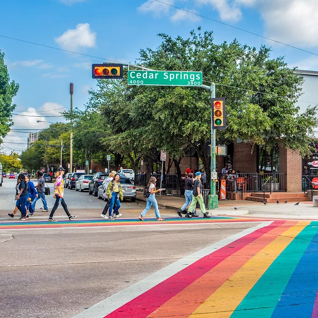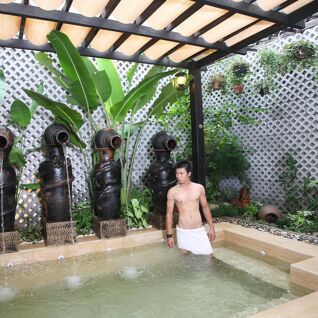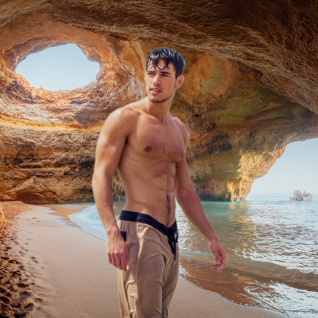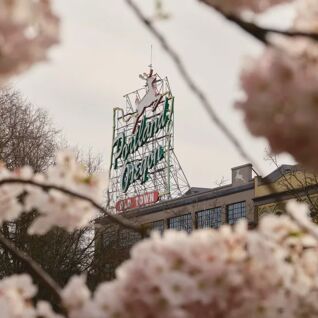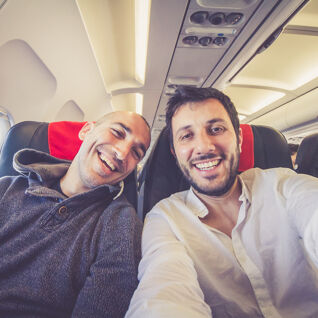
When I visited Taormina a few years ago, it seemed so tailored to my tastes that I was miffed no one had let me in on the secret. I was in Sicily on a business trip at the time and decided to play hooky one afternoon. I asked the receptionist at my hotel in Palermo what she suggested.
“Taormina,” she said decisively, and off I went.
Set on a bluff hundreds of feet from Sicily’s eastern coast, Taormina encompasses nearly everything the gay aesthete could wish for. An ancient Greek amphitheater. Idyllic walks through citrus groves and terraced hillsides. Italian men in all directions. Beaches washed by azure waters, one of which discourages bathing suits. And topping it all, Mount Etna, the smoking-hot volcano just to the south seems to hover in some other, more Olympian dimension.
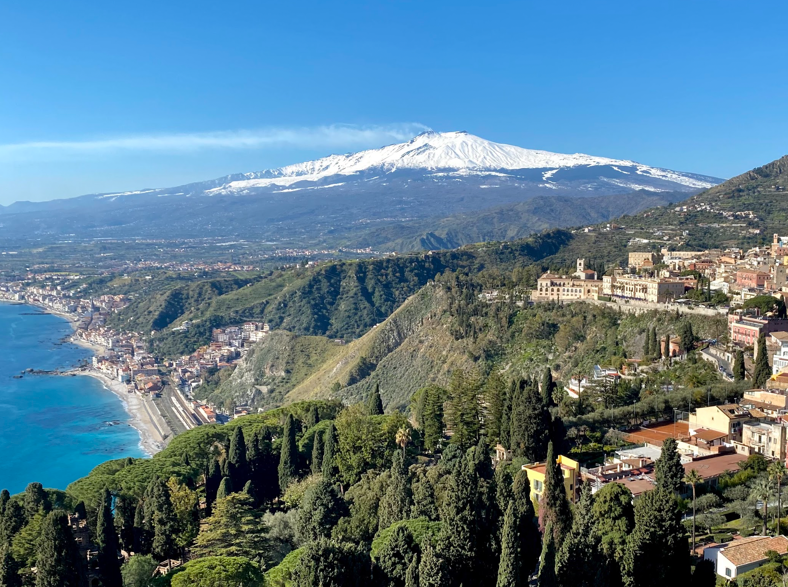
By the time I returned to my hotel that evening, Taormina had become something like my own private Idaho — a blissful refuge that hovered between the real and the imaginary. Being alone and having left my camera in the hotel, I had no way to prove that I had been to paradise and back. I could only hope I’d return someday.
Then last fall, I fired up the first episode of “The White Lotus” Season Two on my laptop. And there it was — Taormina in all its intoxicating beauty. I seemed to be watching my own memories captured on the small screen. A full-frontal view of Theo James added to the thrill.
As I watched the series, something disturbed me (besides the show’s exploration of the dark regions of the human heart). Taormina was being offered up to millions of “White Lotus” fans, and I feared it would bring shopping-mall throngs to this by-appointment-only boutique of a city.
So, this winter I decided to get back to Taormina before the world descended. Of course, my first order of business was to visit the real star of the show, the hotel itself. Was it real, I wondered, or just a Hollywood confection — a half a dozen locations spliced together to make a single, sublime, but ultimately non-existent whole?
A quick Google search confirmed that the hotel indeed exists and it looks very much like the one in the show. For 500 years, it was home to Dominican monks. In the late 19th century, it was turned into a hotel called the San Domenico Palace. And few years ago, it got a major makeover and became a Four Seasons property.
Unfortunately, I wasn’t traveling on a Four Seasons budget. However, I could at least slip in for a drink, perhaps even a meal. Then, I discovered even that would be impossible. The hotel would be closed for a deep clean and refurbishing exactly when I planned to be in Taormina.
But I didn’t give up. After a flurry of emails, one of the hotel’s managers agreed to give me a backstage tour. And so, on a sunny late-winter afternoon, she kindly met me at the hotel’s front gate and invited me inside.
As I moved through the hotel’s grand spaces, the world of the show was materializing before me. The walled entrance court. The glossy reception hall. The lushly planted cloisters. The many-windowed bar and restaurant where every single character on the show is at some point desired or betrayed—or both. The only purely fictional element, my host told me, was the tunnel that connects the hotel with the beach that lies 600 feet below.
My expectations for the San Domenico Palace were high, and it met them. However, it was the gardens that took my breath away. White Lotus skims past them in favor of human intrigue. However, landscape architect Marco Bay has created a gorgeous and varied set of botanical spaces. Inside the massive complex, there are the lush and welcoming Grand Cloister and the spare and meditative Ancient Cloister. Outside, you pass through the wild plantings of the Alto Giardino (High Garden) and the Citrus Garden, which sneaks in a riot of shapes, colors, and smells into its rigorously geometric parterres. Finally, at the edge of the bluff on which the hotel sits, you reach its signature infinity pool.

Walking through the gardens, I asked my host if such a rarified place had attracted the rich and famous over the centuries. Yes, she said, and among the names she mentioned were a Who’s Who of elite gay writers and artists. The first to arrive, she explained, was the German baron Wilhelm von Gloeden. You have almost certainly seen his black-and-white photos of barely dressed (and often barely legal) young men. They are dressed up in classical garb and stand amid the broken columns of the Greek theater. The snow-capped Mount Etna smolders in the background.
These photos circulated among a blue-chip coterie of gay artists and writers across Europe. Soon, Andre Gide and Oscar Wilde showed up to meet the boys in person. Thomas Mann, author of Death in Venice, also visited. And a generation later, Gore Vidal, Truman Capote, Tennessee Williams, Somerset Maugham, and Jean Cocteau all made paid homage.
Despite this rich queer legacy, Taormina fell off the gay map by the late 20th century. We had so many other, more accessible places to choose from by then. However, “The White Lotus” is starting to change that. In fact, you can book a White Lotus tour designed for an upscale gay clientele.
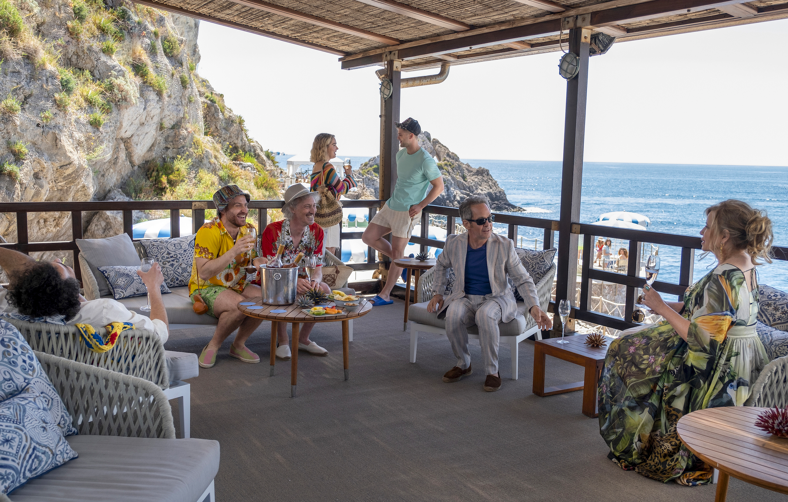
Strangely, Mike White, the show’s openly bisexual creator, made almost nothing of Taormina’s queer backstory in his script. Perhaps he deliberately left it in the shadows, just like the sexual lives of Wilde, Gide, and friends. Certainly, this made my own process of discovery more thrilling. And I understand now why I fell so hard for Taormina the first time I visited. Somehow, I’d sensed its rich gay past. And I’d populated its arcadian landscape with unconscious memories of von Gloeden’s naked young men.
A shortcut to gay Taormina
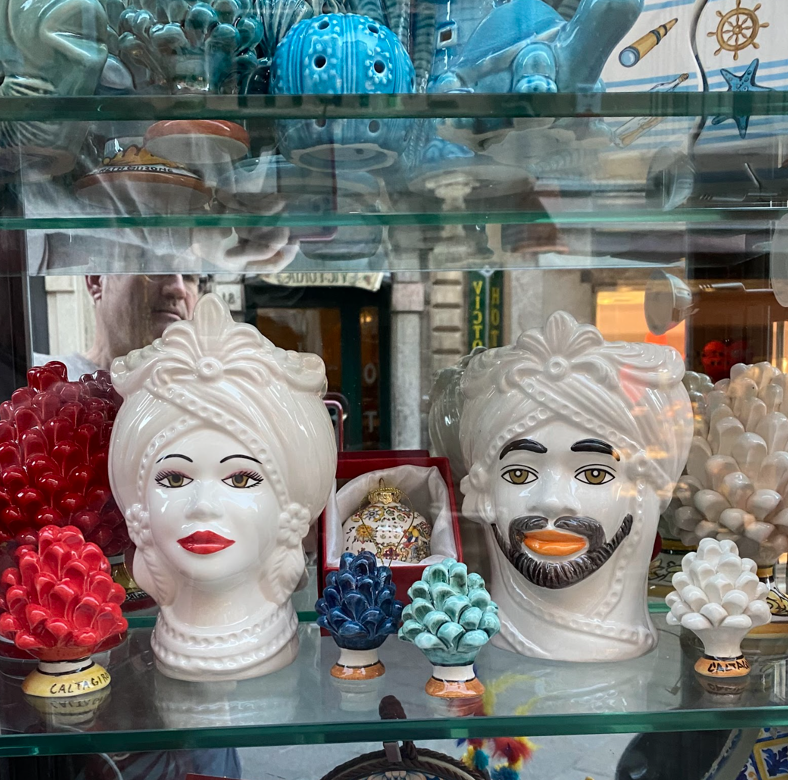
Despite its legendary gay past, there are no officially LGBT bars, restaurants, or hotels in Taormina, though nearly everywhere is welcoming.
The place to eat, drink, see, and be seen are the various bars and restaurants of the San Domenico Palace, including the Michelin-starred restaurant Il Principe Cerami.
If rooms at the San Domenico Palace are too pricey, check out the cozy and gay-friendly Maison D’art Casa Aricò.
Just below Taormina in the seaside town of Spisone, you will find the clothing-optional Rocce Bianche beach.
And don’t miss Casa Cuseni the villa built by Robert Kitson. Kitson was a painter and a wealthy member of Taormina’s gay elite in the early 20th century. In addition to a museum conserving the art of Kitson and his circle, you can stay in one of the home’s four guest suites.
RELATED: Colossal Pride celebration floods the streets of Rome








